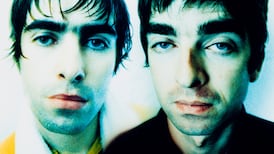Lynn Goldsmith entered Bruce Springsteen’s life when he was recording Darkness on the Edge of Town with the E Street Band. It was New York in the late 1970s, and Springsteen was making his fourth studio album. He was still “ambitious, young, wild and innocent”, but after three years without a record – he had released Born to Run in 1975 – the press, he says, considered him a “hyped-up one-hit wonder”.
So when he went on the road to promote his new songs, he “came out on stage with everything to prove every night”. And Goldsmith – whom he calls “a lovely New York apparition who appeared in the studio one evening shooting photos of the band” – was there to capture it on camera.
The result is Bruce Springsteen & the E Street Band: Darkness on the Edge of Town, a deluxe book of photographs she took as they moved from small-town theatre to small-town theatre during a tour that helped the singer and his band build the reputation that still means they sell out stadiums – as they did just this month, when the tickets for two of their four Irish dates next year were gone within 90 minutes.
Their success “is very much, I think, due to how hard they work, not just the God-given talents that they have”, Goldsmith says.
READ MORE
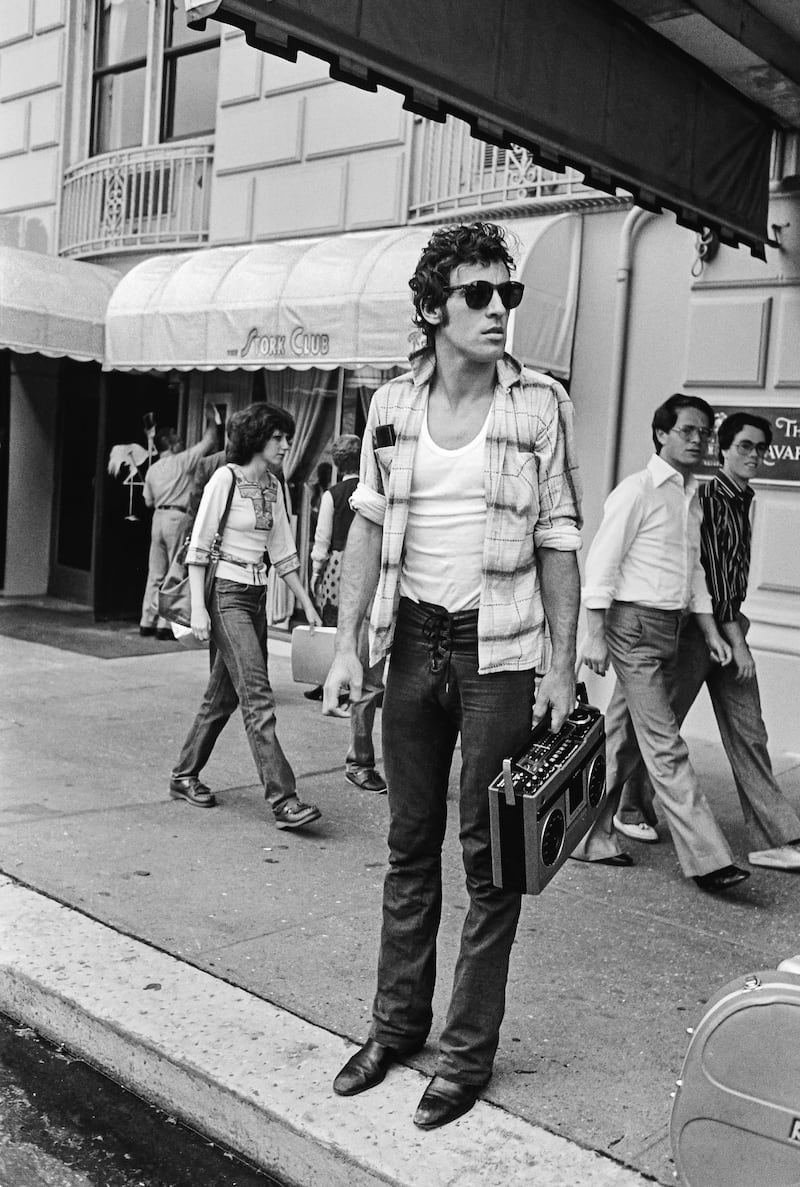
Some of the photographs in the book show the band on stage; others are studio portraits that Goldsmith hoped would help get publicity for the album. “Bruce was clear that he didn’t want ‘smiley’ photos as they wouldn’t reflect the tone of the album,” she writes in her introduction. “He knew what he was comfortable wearing. He knew his hair and that it was better to shoot when it was dirty.”
He also let Goldsmith photograph him in a studded leather jacket that is now in the Rock & Roll Hall of Fame. “The little golden bronze marker on it said that it was Bruce Springsteen’s. It made me laugh,” Goldsmith says. “First of all, it was my jacket. But that jacket is not very Bruce at all. He is not a studs kind of guy – he is more like a funky leather jacket that has been run over by a truck. Bruce only put it on because I asked him to.”
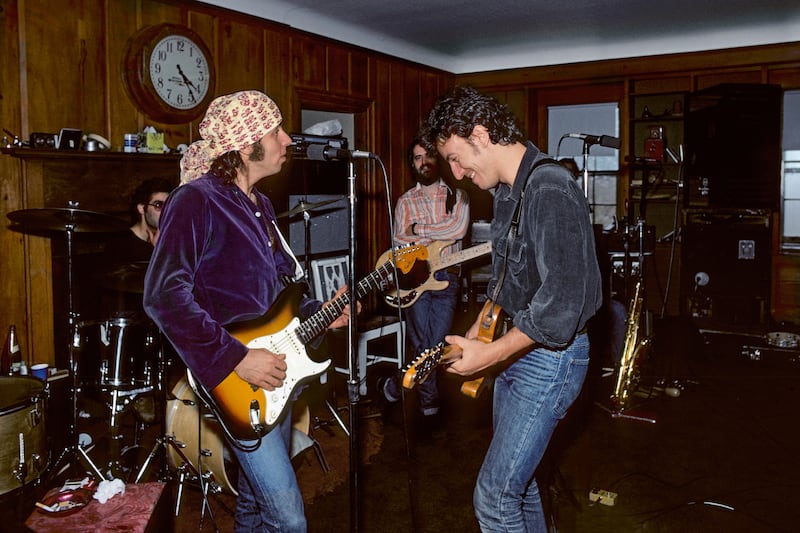
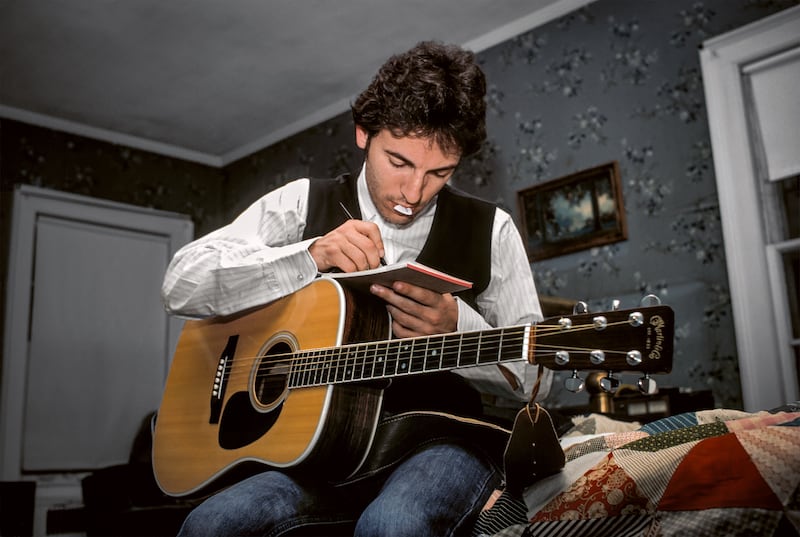
When it came to photographing the band at work, “people just kind of forget you’re there, because they are used to you being there and they are used to you making pictures all the time, because that’s what you do,” says Goldsmith, who during her award-winning career has also chronicled Patti Smith, Bob Dylan, the Rolling Stones and the Police. (She has made music herself, too, including, as Will Powers, the 1980s hit Kissing With Confidence.)
Being a fly on the wall wasn’t always easy, however: Goldsmith was able to see the highs but also the lows. “Bruce could hear things in his head that might have been difficult for him to actually explain to either engineers or to the band themselves,” she says. “So there were times that were very frustrating, because everyone wanted to give their best, but they were not necessarily sure of what Bruce wanted.” Springsteen “pushes until he gets what it is that makes him feel that the song is complete.”
But, Goldsmith adds, “they all had a good sense of humour; they all cared about each other. You know, you get through it, you are a family. They were a band of brothers, and it wasn’t personal: it was just really a matter of each of them stretching themselves to be the best that they could be.
“They could think at one moment they just did the best job, but they could get pushed further – and that was fine,” she says. “Like, you know, Bruce screamed and yelled at people. It was all respectful: it was just frustration.”
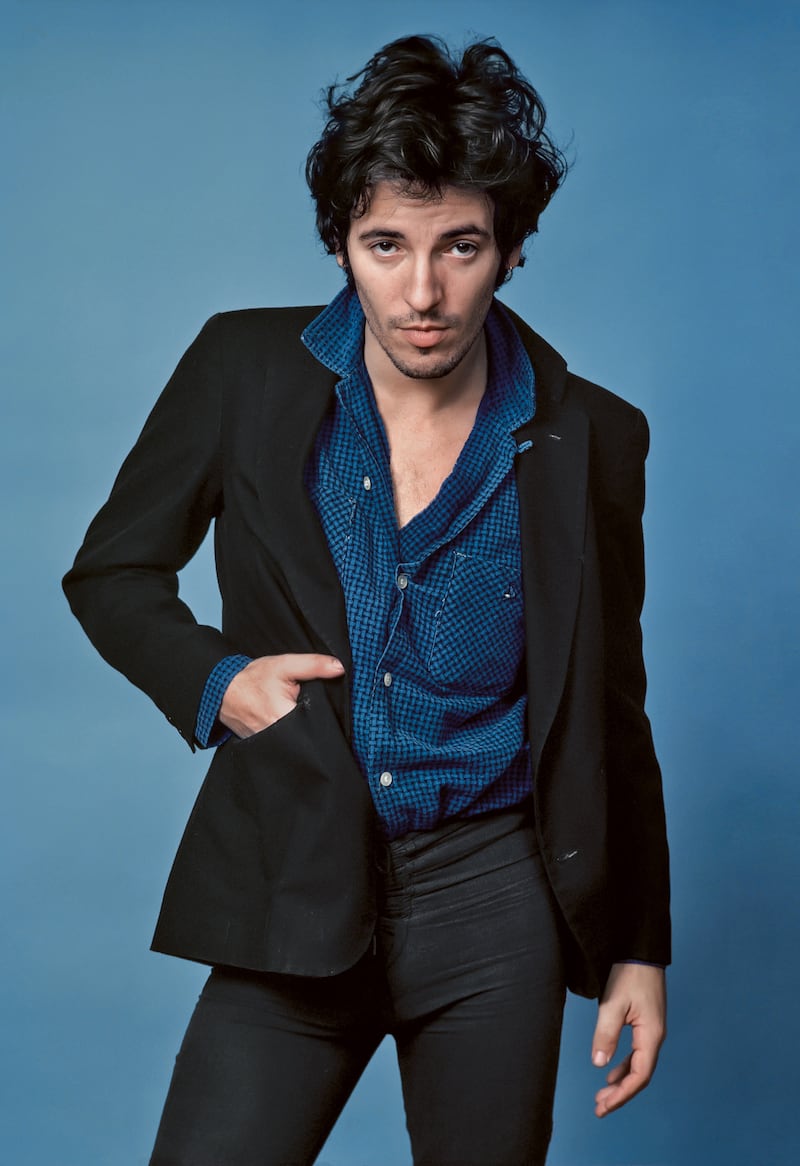
For Springsteen, the job also included making sure his audience would see a good show. “Bruce was really very different than any artist I had ever gone out on tour with,” the photographer says. “He spent more time and more care not only with soundcheck but with making sure that, in every venue, every seat had a clear view of the stage – he would go up on the balconies.
“There’s shots in the book of him walking all over the place, standing in seats. With Bruce there was, like, a three- to four-hour soundcheck, and then the show was at least three hours, because Bruce did not want to have an opening act, so the band and Bruce worked harder than anyone I had ever experienced.
“After the show, when we got on the bus, Bruce would listen back – because every show was taped – and make notes and go over parts and then call into the back of the bus some of the band members, to talk about where they might change certain things or do certain things,” she says.
“Bruce was also very different in that he kept it fresh, because no two shows were the same, and even though there was a set list, the band knew that Bruce could change up the songs and throw in a song they had not even rehearsed,” she says. “It felt authentically exciting.”
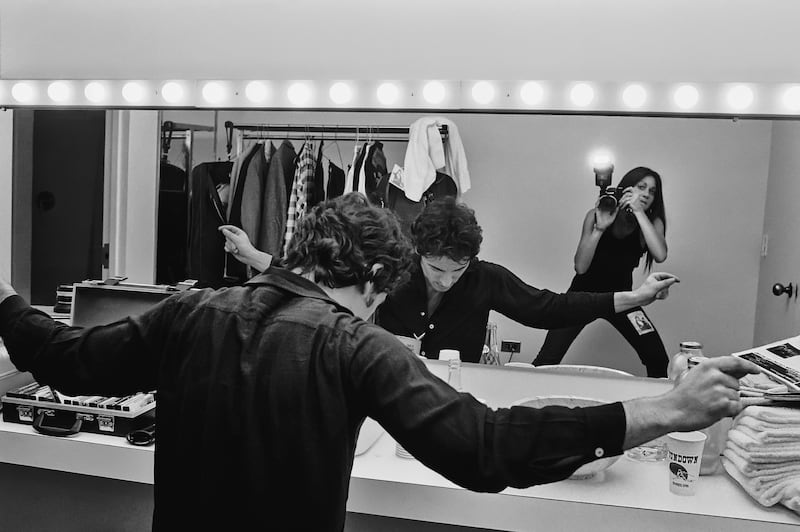
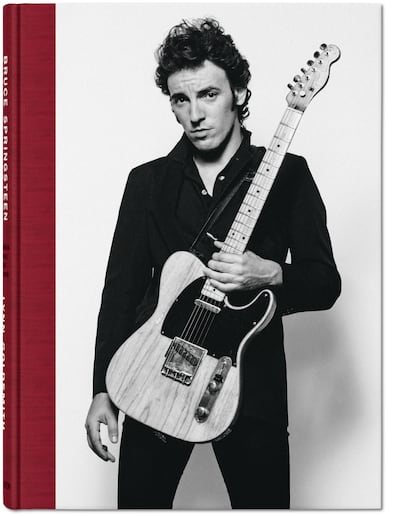
He’d also talk to his fans, she says. “He was someone who could relate stories about the songs, so if you were in the audience you had a much stronger connection than an artist standing on stage saying, ‘Do you want to party? Let’s hear it for Detroit!’ Bruce did not do that, and most artists did.”
Photographing Springsteen was easier for Goldsmith than it might have been for somebody else. “Any photographer who has a friendship, much less a romantic relationship, with their subject, it’s much easier than someone who walks in that’s never met anyone before, because you have trust,” she says.
But there are also photographs she has kept private. “The pictures I made, let’s say, just for fun, in the way that you might have made them with your boyfriend, which are really personal pictures, those aren’t in the book.”
Bruce Springsteen & the E Street Band: Darkness on the Edge of Town, by Lynn Goldsmith, is published by Taschen





